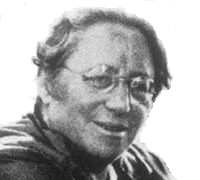Rings and Modules MAS427
- This is a level 4 course, also available for MSc.
- Lectures are on Tuesday at 1 in Mathematics 103 and 2 in Mathematics B17.
- The lecturer is
Professor Bill Jackson.
Invitation
This course is an introduction to module theory. Module theory was
built up during the first half of the twentieth century, to collect
together algebraic ideas that were important for various applications
in group theory, number theory, geometry and algebraic topology among
other places. Unfortunately there won't be time in this course to go
into any of these applications in detail. But the theory of modules
makes good sense on its own, and it is one of the most elegant parts of
modern algebra.
The basic idea is that abelian groups are very well behaved objects,
and we can understand other kinds of mathematical object better if we
can somehow relate them to abelian groups. One common way of doing this
is to let the mathematical object act on suitable abelian groups as a
collection of operators, i.e. as endomorphisms of the groups. In this
way the object generates a ring R, and we can look at the
family of all abelian groups on which this ring R acts; these
groups are the R-modules. A huge amount of information about R
can be extracted not just from the modules but from the homomorphisms
between them; so we shall have a lot of diagrams with arrows. One of
the most unexpected features of this theory (some people originally
complained that it was 'theology not mathematics') was the powerful and
simple way that it uses finiteness assumptions (which say that some set
is finite without saying exactly how large).
All courses in this subject ultimately go back to the lecture notes of
the great German algebraist Emmy Noether at the University of
Goettingen in 1927/8. Our version of the course is based on notes of
Wilfred Hodges.

Emmy Noether, 1882-1935
Syllabus
- Introduction to module theory, starting from the definition of
module: free, flat, projective and injective modules, products,
coproducts, tensor products, exactness and the Hom functor will be
covered. The notion of a ring will be assumed.
- Structure theorems: chain conditions on rings and modules,
Noetherian rings, Artinian rings, Artin-Wedderburn Theorem and the
structure of finitely generated modules over principal ideal domains.
Lectures and coursework
A copy of Wilfred Hodge's notes for this course,
is available as a
pdf file.
This year's courseworks will be online here as soon as they
become available.
Exercises 1 (pdf file)
Exercises 2 (pdf file)
Exercises 3 (pdf file)
Exercises 4 (pdf file)
Exercises 5 (pdf file)
Key objectives
If you have a secure grasp of the key objectives, you should have no
trouble passing the exam. But the exam will certainly contain things
not in the key objectives.
You should know the following definitions:
- abelian group, ring, ideal, module,
- cartesian product of sets, direct product and direct sum of
modules,
- HomR(M,N),
- free, projective and injective module,
- tensor product of modules (by universal mapping property),
including proof of uniqueness,
- flat module,
- artinian and noetherian module (both in terms of chain conditions
and in terms of minimal or maximal submodules),
- algebra over a commutative ring,
- completely reducible module, semisimple ring.
You should be able to state:
- Zorn's lemma,
- characterisations of free and projective module,
- explicit construction of tensor product,
- construction of algebras from tensor product of algebras,
You should be able to prove:
- correspondence theorem and isomorphism theorem for modules,
- behaviour of free, projective and injective modules with respect
to direct sums,
- behaviour of tensor product with respect to module homomorphisms
and direct sums,
- associative and commutative laws for tensor product,
- behaviour of flat modules with respect to direct sums,
- all projective modules are flat,
- a module is noetherian if and only if all submodules are finitely
generated,
- behaviour of artinian and noetherian modules with respect to
submodules and quotients,
- if a ring is left or right artinian or noetherian, then so are
its finitely generated left or right modules,
- equivalence of the characterisations of completely reducible
module,
- equivalence of the characterisations of a semisimple ring,
- the Artin-Wedderburn theorem.
Assessment
Assessment is entirely by examination in the summer. The examination
will last THREE HOURS and will contain SIX questions. The rubric will
state:
You may attempt as many questions as you wish and all
questions carry equal marks. Except for the award of a bare pass, only
the best FOUR questions answered will be counted. Calculators may not
be used in this examination.
Five or six lots of coursework will be handed out during the course.
Submitted coursework will be marked but will not count in the
assessment.
Author: Bill Jackson
Last updated 13 January 2004 |

